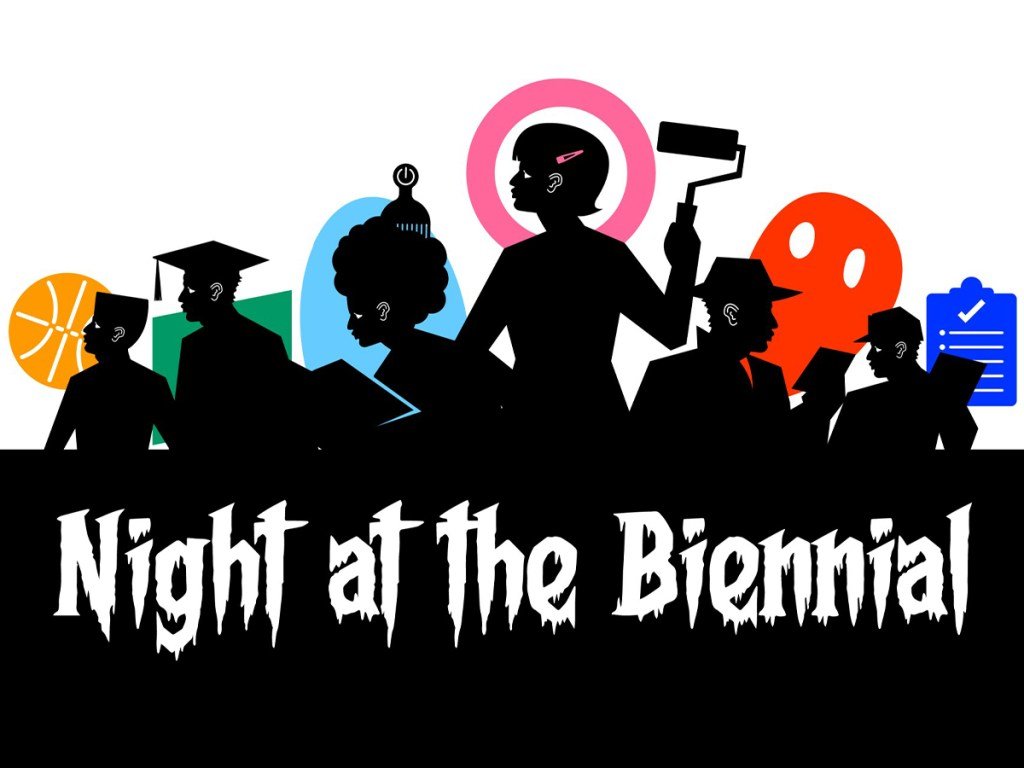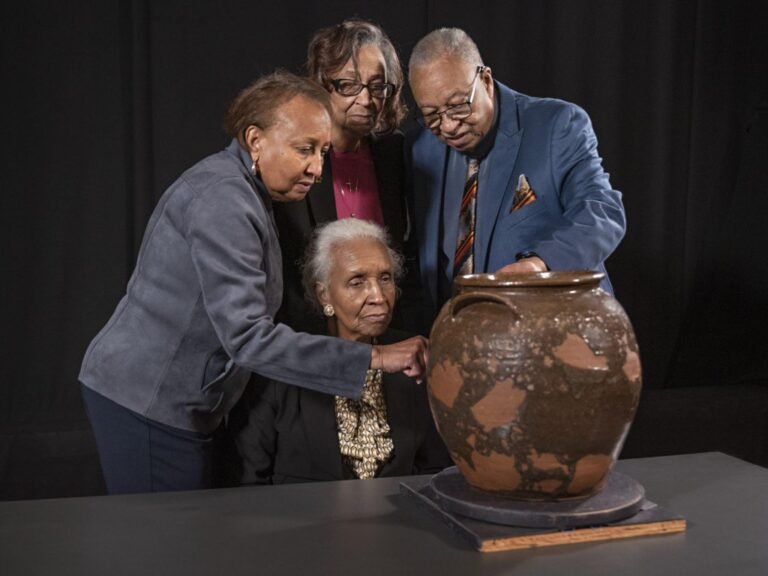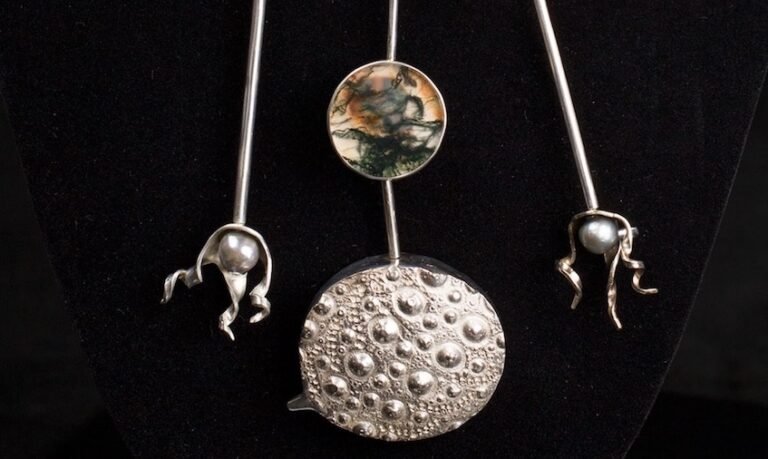


Prologue: Doors
The champagne flutes rattled as The Museum’s grand atrium doors groaned shut. At first, no one noticed. The art world rarely notices when the walls start closing in. The collectors were too busy air-kissing. The curators were trading gossip about Venice. The artists were adjusting their name tags to catch the light just right for photographs.
Then the sound came. A metallic clang echoed through the atrium, reverberating off marble floors and neon sculptures. Security gates descended like guillotines. The crowd laughed nervously.
“Probably a glitch,” said The Museum Director, adjusting his lapel pin. He raised his glass. “Enjoy yourselves. You are perfectly safe.”
His smile stretched too wide, like vinyl warped under a heat lamp.
He was the first to go.
Act I: The First Cut
The opening speeches had barely ended when the first scream tore through the galleries.
The MFA Darling did not even get a chance to finish his artist’s statement. One moment, he was explaining his practice — something about recontextualizing laundry detergent pods through a queer phenomenology of surfaces — and the next, he was gone. Pulled into the shadows behind his own installation.
Only a smudge of wall text remained, peeling at the edges.
People gasped. Collectors whispered. Someone muttered that this had to be a performance. A few Instagram influencers posed beside the bloodstain, hashtags already prepared: #biennial #soedgy #performanceart.
“This is not a drill,” said The Nerd, clutching a battered biennial catalogue from 2013. Her glasses were fogged with panic. “I have seen this before. I wrote about this. The architecture is cursed. The walls are feeding.”
No one listened. They never do.
Before the tension eased, The Black Artist was gone as well. His monumental work on surveillance and joy had been placed under the atrium skylight, surrounded by collectors repeating the word “urgent.” The crowd clapped too long, chanted too loudly, and swallowed him whole. When the applause stopped, only an empty crate stamped RETURN TO STORAGE remained.
“Representation,” someone whispered, “is exhausting.”

Act II: The Killers Unmasked
The museum shifted around them. Corridors looped back into themselves. Wall labels rearranged their text in real time. Paintings bled into sculptures. Video installations flickered with scenes from previous fairs.
Then he appeared.
He wore a bespoke suit, shoes so polished they reflected the exit signs, but his face was hidden behind a stainless steel mask. On its mirrored surface shimmered the logos of every mega-gallery in Chelsea. His voice was soft, soothing, almost parental.
“Representation is forever.”
In one hand, he carried a contract. In the other, he held an invitation to a collector’s dinner. The crowd shivered as he advanced.
The Jock, drunk from the opening bar, staggered forward. “I have Basel next month,” he boasted. “Venice after that. You think you can kill me? I am the future.”
The Killer tilted his head. The Jock turned, and his own mirrored installation collapsed on top of him. Glass sliced through his limited-edition sneakers. He died in a spray of glitter and fake fog, an Instagram-ready corpse.
“Guess not the future,” whispered a curator.
The Collector moved silently, a phantom in couture. One moment, she was praising an artist, calling their work brilliant. The next thing, she was gone, dragging their piece into the secondary market. Auction hammers fell like axes, draining value from careers. She left no blood, only resale records and ruin.
The Doomed Authority Figure fared no better. The Director who had dismissed the danger was cornered in the boardroom. Protesters smashed through skylights, brandishing banners: No War Profiteers on Boards. Abolish Dirty Money.
He tried to insist he was innocent, but his resignation letter was written in blood.
Meanwhile, the Nerd scribbled furiously in her notebook. “It is the system itself,” she cried. “The biennial is alive. The market is the monster. The walls—”
But her voice was swallowed by the hum of an ambient sound installation. No one heard her. Not until it was too late.
Act III: The Body Count Rises
By two in the morning, the atrium had thinned. Shadows pooled in the corners. A video piece of an endlessly looping sunset suddenly showed the Jock’s corpse, projected at monumental scale.
Comic Relief tried to keep spirits up. They were a scrappy collective who had once turned a supply closet into a gallery. They told jokes about landlords and foundations that paid for exposure.
“We will start our own fair in Bushwick,” they said. “We will do it better. No hierarchies. No vampires.”
The walls answered by collapsing on them. They were crushed beneath unpaid invoices, grant rejections, and fire code violations. The rustle of shredded checks replaced their laughter.
The Virgin wandered quietly. She had no collectors, no market frenzy, no scandals. She kept her head down, her practice modest. She had never touched NFTs, nor had she courted a blue-chip dealer. She clutched a sketchbook like a rosary.
Because she refused to play, the killers barely noticed her. She slipped through the carnage invisible, untouched.
The Nerd fought to survive. She waved her catalogue like a weapon, citing footnotes and quoting Hal Foster. “We have to resist the spectacle,” she shouted.
The walls swallowed her whole. All that remained was her tote bag: ART IS RESISTANCE.

The Final Girl watched it all in silence. She was not glamorous. She was not loud. She had spent decades overlooked, dismissed as solid but unspectacular, talented but unlikable.
But she carried a tote of her own: duct tape, spackle, leftover grant funds, a residency meal card. The tools of survival.
When the Mega-Gallery Killer lunged, she patched the wall shut. When the Collector tried to flip her work, she quietly withdrew it from auction. When the institution roared, she ducked into her practice, biding her time.
She did not fight for glory. She fought to endure.
Act IV: Dawn
By dawn, only she and the Virgin remained. The Virgin whispered, “How did you survive?”
The Final Girl shrugged. “I never stopped working.”
The atrium doors creaked open, sunlight spilling through. The Final Girl stepped into the cold morning, her clothes flecked with acrylic dust. Behind her, the museum groaned, collapsed, and began rebuilding itself for next year’s cycle.
She did not look back.
Epilogue
Weeks later, the art press published their reviews:
- “The biennial was a triumph of resilience.”
- “The market shows no signs of slowing.”
- “The Director’s replacement promises reform.”
No one mentioned the blood. No one mentioned the bodies.
Only the Final Girl remembered. She carried the memory back into her studio, knowing the cycle would start again. Because in the art world, survival is not victory. Survival is just another practice.


